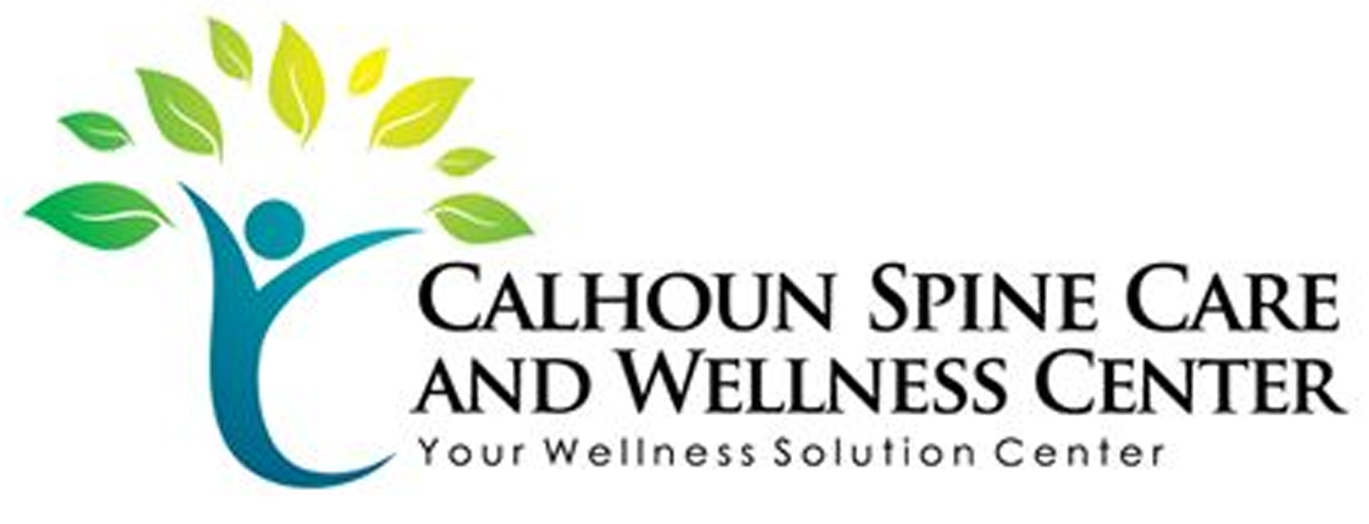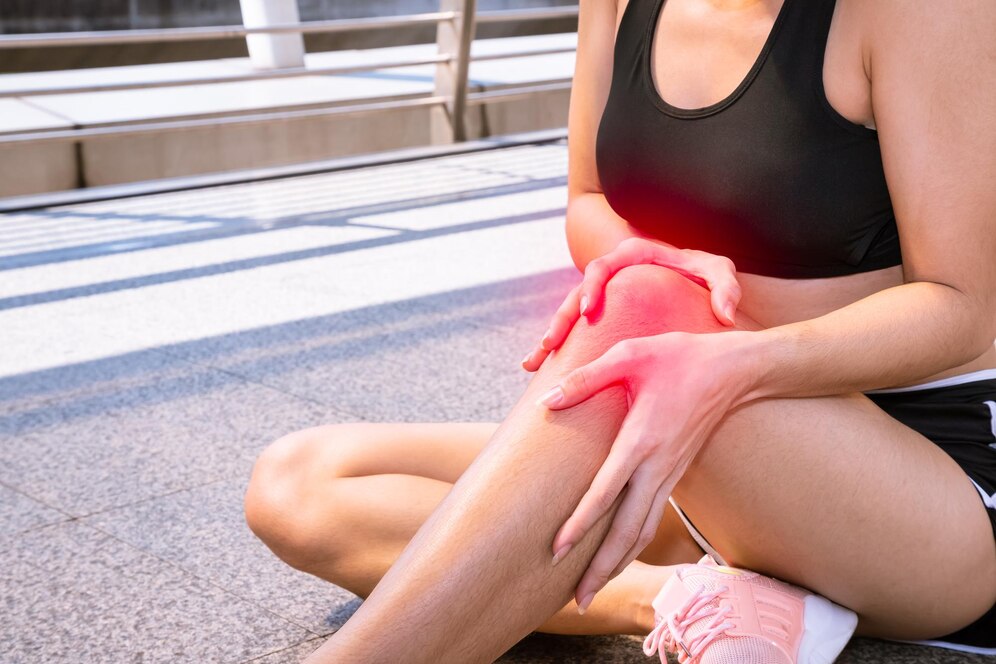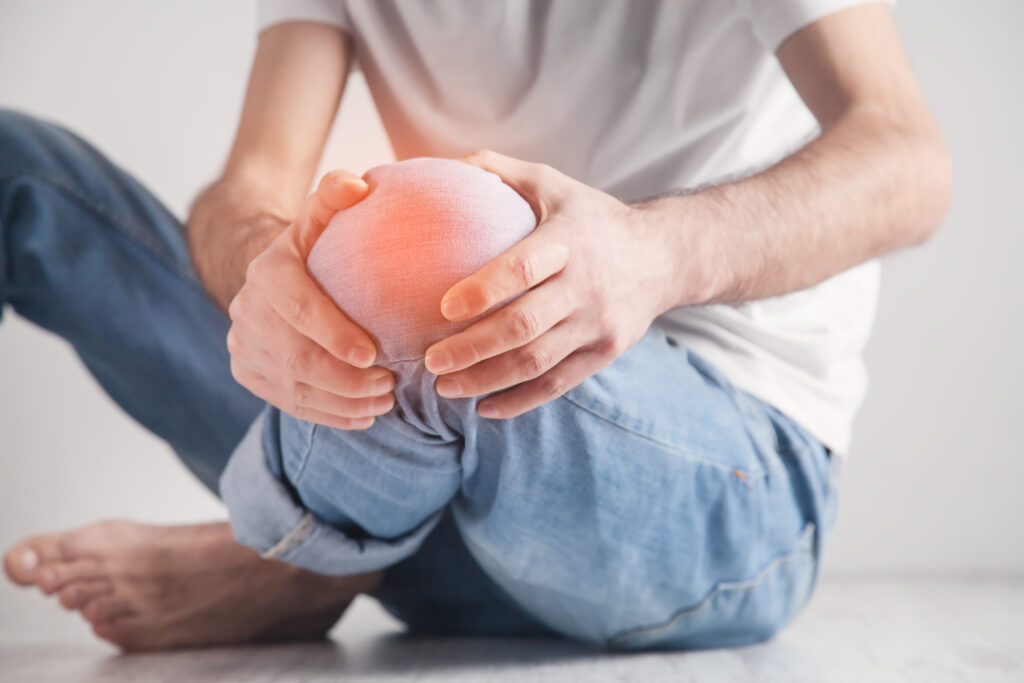You've probably seen athletes struggle with injuries, and it's easy to think the road to recovery is all about quick fixes or surgeries. But what if there's a more natural approach that not only heals but also strengthens your body? By focusing on nutrition, herbal remedies, and therapies like massage and acupuncture, you might find a more holistic path to revival. As you explore these methods, consider how they can transform not just recovery, but your entire athletic experience. What could this mean for your performance and well-being?
Understanding Sports Injuries
When you immerse yourself in sports, understanding injuries is fundamental for your performance and recovery. Sports injuries can happen to anyone, regardless of skill level, and knowing the common types can help you recognize them early.
Sprains, strains, fractures, and tendonitis are prevalent among athletes. A sprain occurs when ligaments are stretched or torn, often affecting ankles or knees. Strains, on the other hand, involve muscles or tendons and frequently occur in the back or hamstrings.
Recognizing the signs and symptoms of these injuries is essential. Pain, swelling, and limited range of motion are common indicators. If you experience these symptoms, it's critical to assess your condition and not push through the pain. Ignoring symptoms can lead to chronic issues that impede your performance long-term.
Prevention is just as important as understanding injuries. Make sure you warm up properly before engaging in any physical activity. Incorporating strength training and flexibility exercises can fortify your muscles and joints, reducing the risk of injury.
Always listen to your body; if something feels off, take the time to address it.
Finally, don't hesitate to seek professional help if an injury occurs. A sports medicine specialist can provide valuable insights into your condition and guide you through recovery.
The Role of Nutrition
When you're recovering from a sports injury, nutrition plays an essential role in your healing process.
You need vital nutrients to support tissue repair and reduce inflammation, and staying hydrated is just as important for ideal recovery.
Let's explore how what you eat and drink can greatly impact your healing journey.
Essential Nutrients for Recovery
Proper nutrition plays an essential role in your recovery from sports injuries. To heal effectively, you need to focus on specific nutrients that support tissue repair and reduce inflammation.
First, prioritize protein. It's vital for rebuilding muscle and repairing damaged tissues. Incorporate lean meats, fish, eggs, and plant-based sources like beans and lentils into your meals.
Next, don't overlook healthy fats. Omega-3 fatty acids, found in fatty fish, flaxseeds, and walnuts, can help decrease inflammation, making your recovery smoother.
Vitamins and minerals are also key players in your healing process. Vitamin C, for example, aids in collagen formation, so include citrus fruits, berries, and leafy greens in your diet. Zinc, found in nuts, seeds, and whole grains, supports immune function and wound healing.
Finally, whole grains should be a staple in your diet. They provide essential carbohydrates that give you the energy needed for recovery.
Hydration's Impact on Healing
While many focus on nutrients for recovery, hydration is equally vital in healing sports injuries. Your body relies on water to transport nutrients, remove waste, and maintain ideal function. When you're dehydrated, your healing process can slow down, making it harder for your body to recover effectively.
Drinking enough fluids helps to lubricate joints, which is essential if you're dealing with injuries like sprains or strains. Proper hydration also supports blood circulation, ensuring that the injured area receives the oxygen and nutrients it needs for repair.
When you keep your fluid levels up, you can reduce inflammation, which often accompanies injuries.
It's not just about drinking water, either. Electrolytes play a significant role in hydration. Incorporating drinks that replenish these minerals, like coconut water or electrolyte solutions, can enhance your recovery.
Pay attention to your body's signals. Thirst is a clear indicator, but you should also monitor urine color; pale yellow usually means you're hydrated.
Herbal Remedies for Recovery
When you're recovering from a sports injury, herbal remedies can be a powerful ally.
You'll find that popular healing herbs, like arnica and turmeric, can greatly aid your recovery.
Let's explore how to effectively use these herbs and the best application methods to maximize their benefits.
Popular Healing Herbs
Many athletes turn to popular healing herbs to accelerate their recovery from sports injuries. These natural remedies can provide effective support in healing, reducing inflammation, and alleviating pain.
One of the most well-known herbs is turmeric, which contains curcumin, a powerful anti-inflammatory compound. Adding turmeric to your diet can help speed up recovery and decrease soreness.
Another favorite is ginger, which is praised for its ability to reduce muscle pain and soreness. Incorporating ginger into your meals or sipping it as tea can offer comforting relief.
Arnica is another herb that's often used topically for bruises, sprains, and muscle aches. Whether in cream or gel form, arnica can soothe your injuries and promote healing.
Don't overlook the benefits of boswellia, known for its anti-inflammatory properties. It may be particularly helpful for joint pain and stiffness.
Finally, rosemary's antioxidant properties can bolster your recovery by improving circulation and reducing inflammation.
By integrating these herbs into your healing routine, you can support your body's natural recovery processes and get back to your game faster.
Always consult a healthcare professional before starting any herbal remedies to confirm they're right for you.
Application Methods Explained
Understanding how to apply herbal remedies effectively can greatly enhance your recovery from sports injuries. Start by identifying the specific herb that suits your injury. For instance, arnica is excellent for bruising and swelling, while turmeric can help reduce inflammation.
When using these herbs, you can choose various application methods. For topical use, create a poultice by mixing dried herbs with water to form a paste, then apply it directly to the affected area. Alternatively, you can use herbal oils or salves, massaging them gently into your skin for deeper absorption.
If you prefer internal remedies, consider herbal teas or capsules. For instance, drinking ginger tea can help alleviate pain and boost circulation. Make sure to follow recommended dosages, as too much can lead to adverse effects.
Lastly, always consult a healthcare professional before starting any herbal regimen, especially if you're taking other medications.
Benefits of Acupuncture
Acupuncture offers a range of benefits for athletes recovering from sports injuries. This ancient practice can considerably enhance your healing process by promoting blood circulation and reducing inflammation. When you receive acupuncture, fine needles stimulate specific points on your body, encouraging your natural healing mechanisms to kick in. You'll often find that this results in faster recovery times.
In addition to physical healing, acupuncture can help alleviate pain. It releases endorphins, your body's natural painkillers, which can reduce your reliance on over-the-counter medications. This means you can manage discomfort more effectively while focusing on your recovery. You might also notice improved range of motion in your injured area, allowing you to get back to your sport sooner.
Stress can be a barrier to effective healing, and acupuncture can play an important role in managing it. By promoting relaxation and reducing anxiety, acupuncture helps create a favorable environment for recovery. You'll likely feel more balanced and centered, which can be beneficial for your overall performance.
Moreover, acupuncture can help prevent future injuries. Regular treatments can keep your body in tune, addressing any imbalances before they become problematic. By incorporating acupuncture into your recovery plan, you're not just treating your current injuries; you're also investing in your long-term athletic health.
The Power of Massage Therapy
Regularly incorporating massage therapy into your recovery routine can greatly enhance your healing from sports injuries. This hands-on approach not only alleviates pain but also promotes blood circulation and encourages the body's natural healing processes.
When you experience an injury, knots and tension often develop in the surrounding muscles. Massage therapy targets these areas, helping to release tightness and improve flexibility, which can be essential for a full recovery.
You might think of massage as a luxury, but it's a valuable tool in your rehabilitation arsenal. By working with a skilled therapist, you can receive tailored treatments that address your specific injuries and needs. Techniques such as deep tissue massage, trigger point therapy, and myofascial release can be particularly effective in treating sports-related injuries.
Additionally, massage therapy can help reduce inflammation and swelling, which is critical for healing. It can also enhance your range of motion, allowing you to regain strength and function more quickly.
You'll likely find that regular sessions not only improve your physical condition but also boost your overall mood and mental clarity, helping you stay focused on your recovery goals.
Incorporating massage therapy into your routine doesn't just speed up healing; it also helps prevent future injuries. By prioritizing your body's maintenance, you'll guarantee you're in top shape for your next athletic endeavor.
Mind-Body Connection in Healing
When it comes to healing from sports injuries, the mind-body connection plays an essential role in your recovery process. Your mental state influences your physical healing, and understanding this connection can greatly enhance your recovery journey. When you focus on positive thoughts and visualize your healing, you're more likely to experience improved outcomes.
To harness this connection, practice mindfulness techniques such as meditation or deep breathing exercises. These methods help reduce stress and anxiety, which can impede your body's natural healing response. By calming your mind, you create an environment that fosters recovery.
You might also consider engaging in yoga or tai chi, as these practices encourage body awareness and promote relaxation.
It's crucial to listen to your body during the healing process. Acknowledge any discomfort or pain without letting it dominate your thoughts. Instead, shift your focus to what you can do to aid your recovery, like gentle stretching or low-impact activities. This proactive approach empowers you and reinforces the mind-body connection.
Additionally, don't underestimate the power of positive affirmations. Repeating affirmations that emphasize your strength and resilience can shift your mindset and enhance your healing. Surround yourself with encouragement, whether through supportive friends, family, or community groups.
Preventing Future Injuries
Preventing future injuries is crucial for any athlete looking to maintain their performance and overall health. By taking proactive steps, you can greatly reduce your risk of injury and stay in the game longer. Here are three key strategies to keep in mind:
1. Warm-Up and Cool Down: Always start with a proper warm-up before any physical activity. This prepares your muscles and joints for the work ahead.
Likewise, cooling down helps your body shift back to a resting state, reducing muscle tension and soreness.
2. Strength and Flexibility Training: Incorporate strength training and flexibility exercises into your routine. Building strength in key muscle groups can improve performance and reduce the chance of injuries.
Stretching enhances your flexibility, which is crucial for maintaining a full range of motion and preventing strains.
3. Listen to Your Body: Pay attention to any signs of discomfort or fatigue. Ignoring these signals can lead to more severe injuries.
If something doesn't feel right, adjust your training intensity or take a break. Recovery is just as important as the workout itself.
Conclusion
Incorporating natural healing methods into your recovery routine is essential for bouncing back from sports injuries. By focusing on proper nutrition, exploring herbal remedies, and utilizing therapies like acupuncture and massage, you can enhance your body's healing process. Don't forget to nurture your mind with mindfulness practices, as they play a vital role in your overall recovery. By prioritizing these holistic approaches, you're setting yourself up for a stronger comeback and reducing the risk of future injuries.



